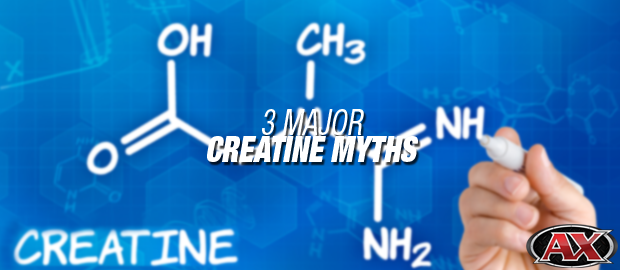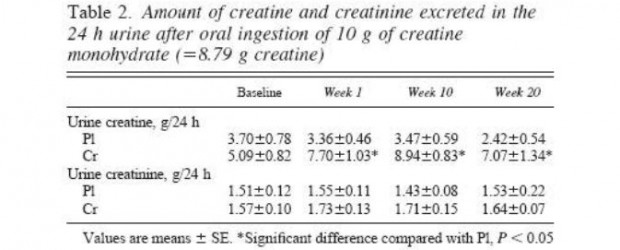
There is a current trend of mis-information regarding creatine and creatine intake usage. Over the years many individuals used different methods for dosing creatine. This article will show you the most optimal way to utilize creatine to reap the benefits. Also the claims that surround creatine regarding bloating, cycling, and endurance will be addressed.
What Is Creatine?
Creatine is a combination of amino acids (glycine and arginine). Creatine is nitrogenous, which in essence provides nitrogen-containing elements of amino acids with glycine, methonine, and arginine. The thing about creatine and how it’s stored in humans is nearly 90-95% skeletal muscle. In that skeletal muscle creatine phosphate can help increase molecules dealing with the metabolic process’s regarding ATP production. During the ATP production it first is broken down into creatine phosphate and then changes to a donation through ATP, which stands for Adenosine tri-phosphate. This is where the increase in ATP production occurs and aids in reducing fatigue and increasing intensity.
What Are The Benefits?
There is a noticeable increase in muscular endurance from increased ATP in the system. The reduction of fatigue and increase in endurance is huge for those who are looking to push themselves as a weight lifter, an endurance athlete, or an overall athlete just looking to compete or play in a sport. How does creatine aid this athlete or weightlifter? When ATP is being stored there are muscle cells that are being hydrated. This is where creatine pulls fluid out of the muscle cell into the main cell’s in the human body (which we will get to further in the article relating a myth on creatine and holding water). Due to creatine pulling fluids outside the muscle cell this increases overall Muscle Protein Synthesis from increased nitrogen to be pulled into the cell.
When ATP is broken down creatine is there to supplement ATP to the cells when broken down at a faster speed than some whole food protein sources. As ATP declines in the human body performance and endurance will begin to drop, therefore creatine is there to supply what you’re losing when you need it most (during your workout). This has been shown to aid in strength, endurance, and overall performance regarding the athlete.
Creatine Myth 1: Loading
First and foremost many people believe in a thing called “Creatine Loading” and saying that it is necessary when beginning the product. After doing some research and browsing the web on creatine I have come to the conclusion while loading can work it’s not 100% necessary. Yes it may help saturate ATP cells faster, but these large doses show no greater benefit over the standard dosing protocol.
The department of Physiology and Pharmacy of a United Kingdom medical center did an extensive study regarding creatine loading. They wanted to see if creatine would have benefit over a steady stream of 3-5g of creatine monohydrate supplementation in 31 males.
Those 31 males in the study were to either:
Load 20g of creatine monohydrate for 6 days.
Or
Take 5g of creatine up to four times a week.
Their ATP production was then gauged in the study and how well they held the creatine in their system. The conclusion of the study is that rapidly loading the creatine (with 20g over the span of 6 days) lead to elevated tissue concentration. The findings did show that creatine was being taken in by the cells, but it led to no advantage over 3-5g of creatine supplementation over a longer span (up to two weeks in the study). The study did show that the steady stream intake actually had raising tissue levels greater than the loading phase. Lets take into account that the creatine pool turnover of around 2g of creatine a day, which can also be found in some whole foods. Those who loaded on 10-20g of creatine have also shown that it can go to waste. Lets refer to the table below with the understandings from the study.
Creatine Myth 2: Cramping and Dehydration
Another common statement thrown around is that creatine causes cramping and dehydration from pulling nitrogen and water into the cell and out of the body. Creatine does pull water out of the system and into the muscle cells, but that doesn’t mean it causes dehydration. The same could be said for cramping, but in reality we have to look at potassium and sodium levels in the body to get into a further understanding of that. Foods such as potatoes and bananas which are high in potassium can combat cramping in the human body as well as adequate creatine intake can help to prevent dehydration.
Lets look at a study from Texas Christian University regarding athletes and creatine supplementation concerning cramping and dehydration. Their coach at TCU (Texas Christian University) kept claiming that his athletes that were taking creatine continued to cramp and be dehydrated due to creatine. However, he had no backing of this information and kept pointing the finger towards supplementation. Let’s dig into this a bit.
While taking creatine you have to realize that the water being sucked into the cell from the increase of ATP production has to be replaced. The replacement has to be done with the individual taking in an adequate amount of water. The coach (from above) is pointing the finger and saying that creatine is not safe due to his claim that it make his athletes weak and dehydrated. TCU they did a study on their football and baseball program regarding creatine supplementation, which proved him wrong. Those individuals were put through 3 a day sessions (football) and two a day sessions (baseball). When long term studies were put to the test there were no negative side effects revealed in either control group (baseball or football) over the time span of their training camp and supplementation of at least 3-5g of creatine monohydrate. There was no attribute to muscle injury, side effects, cramps, or dehydration given the individual was properly hydrated during their test.
Creatine Myth 3: Bloating
We have been tossing around the word “pulling” as we demonstrated water being pulled into the cell to help aid in ATP production. There is also a notion that creatine causes water retention and bloating in the body. Creatine supplementation increased aldosterone no more than placebo in a study. This means that the control group will remain the same and will not increase, even with the increased aldosterone from creatine supplementation. There is strike one against causing water retention.
Lets look back at our first claim with loading and a steady stream of creatine, and think about the big picture for a second. If we load 20g compared to 3-5g per day that is an excessive amount (17-15g) extra and we even showed that the excess creatine just was disposed in the chart above. So what does all that extra creatine do that is being pulled into the cells and causing excessive nitrogen to be produced? Yes, creatine will draw in water, but is this a bad thing? Absolutely not, since creatine draws water intracellularly, i.e. it pulls it INTO the muscle cell. So, creatine drawing in water is NOT a bad thing. It’s necessary and demonstrates that creatine is actually working in your system.
When an individual does load creatine the GI can only absorb so much in its tract and therefore will pull water into the area of concentration. When a cell is already concentrated what happens to the excess? It will just be disposed as we have already shown, and will be held in the system until it does go away. So we just need to keep a steady dosage of creatine, which provides better benefits and has shown superior results compared to loading.
Intracellular vs. Extracellular
We should examine one last factor regarding creatine supplementation between extracellular and intracellular water. The difference between intracellular water and extracellular is that intra makes you look full and hard. Whereas extracellular makes you look soft and bloated (such as a bodybuilder who eats too many carbs during a carb-up or has exceeded their glycogen storage). Creatine is primarily intracellular due to that creatine can hold water if you drastically change your overall water, sodium, or amount of creatine taken (as we have addressed already).
If you are taking a steady stream of creatine intake (3-5g) and your water and sodium intake are staying consistent there is no variable that could cause the excess water weight.











